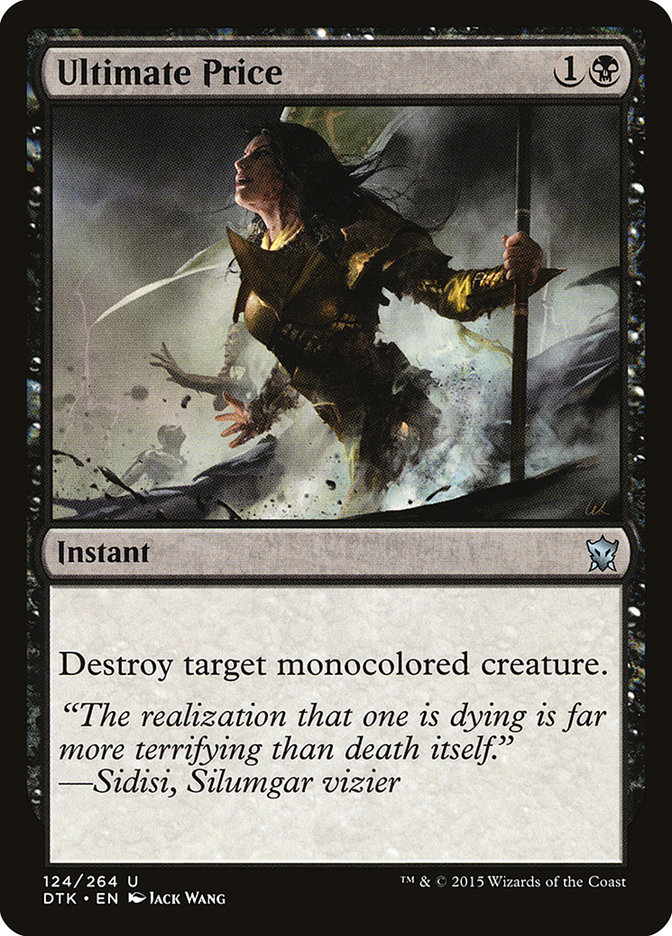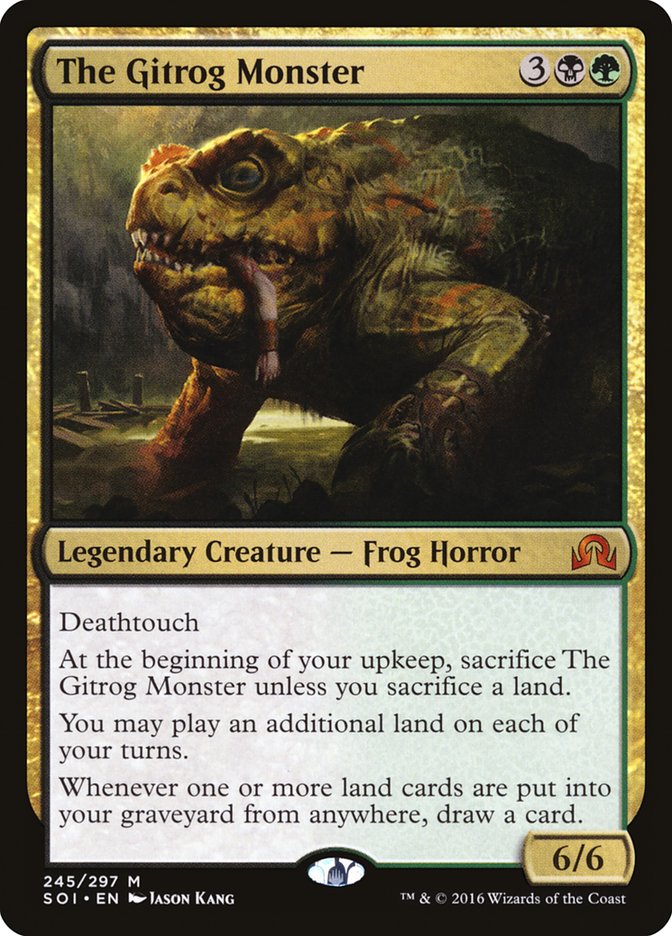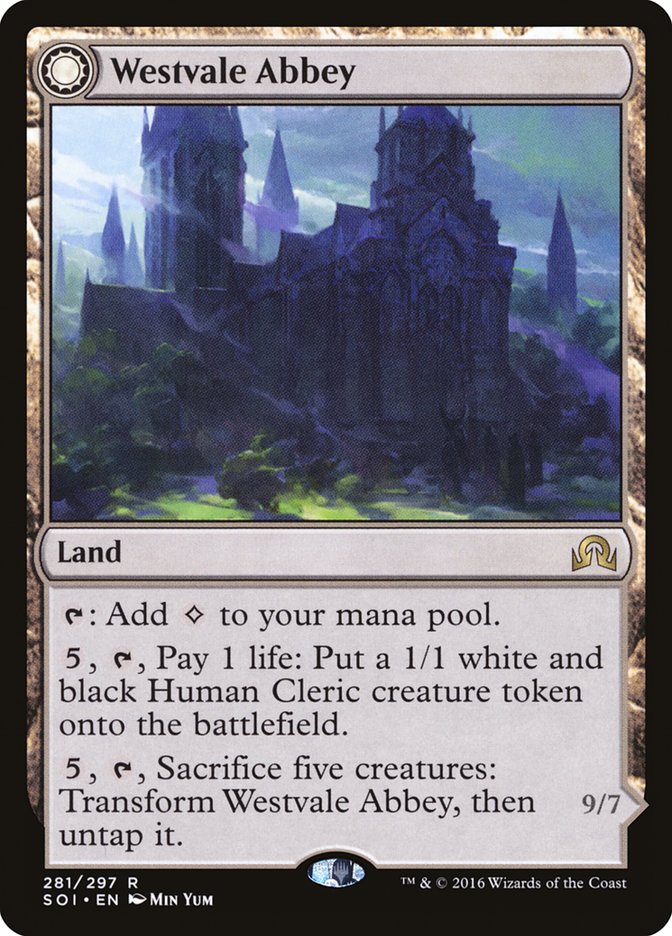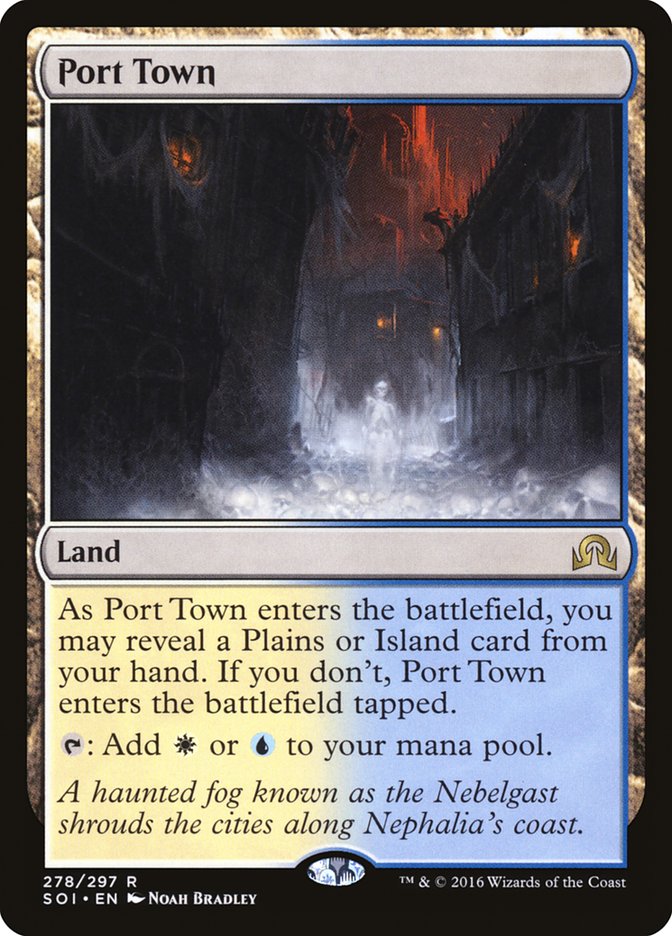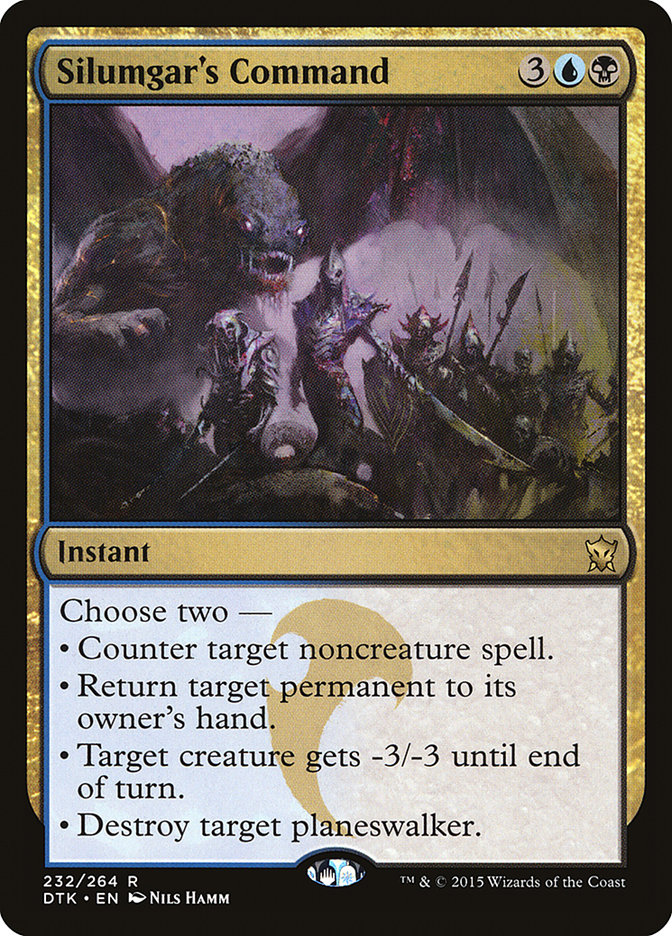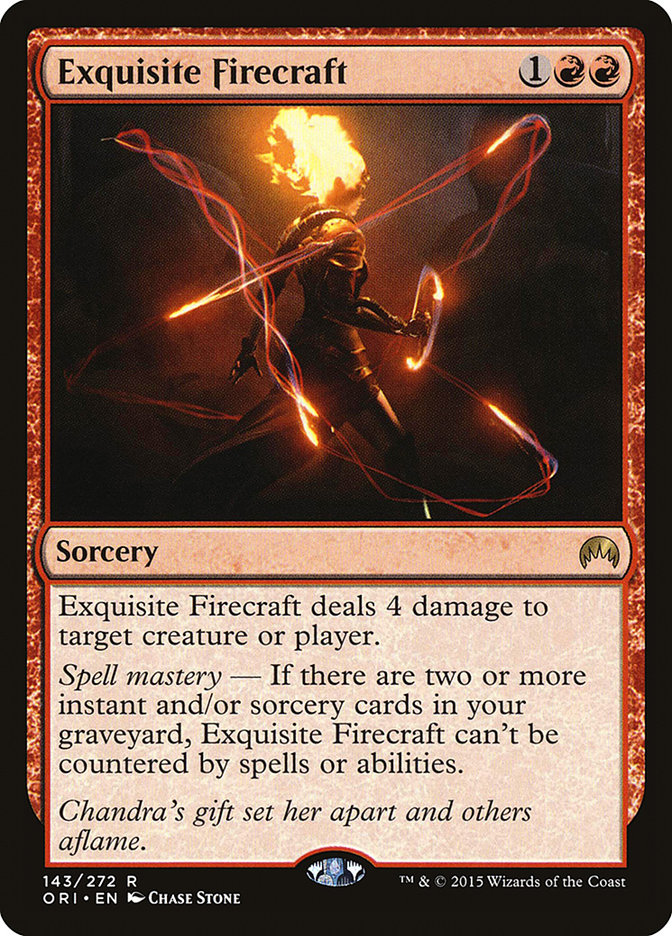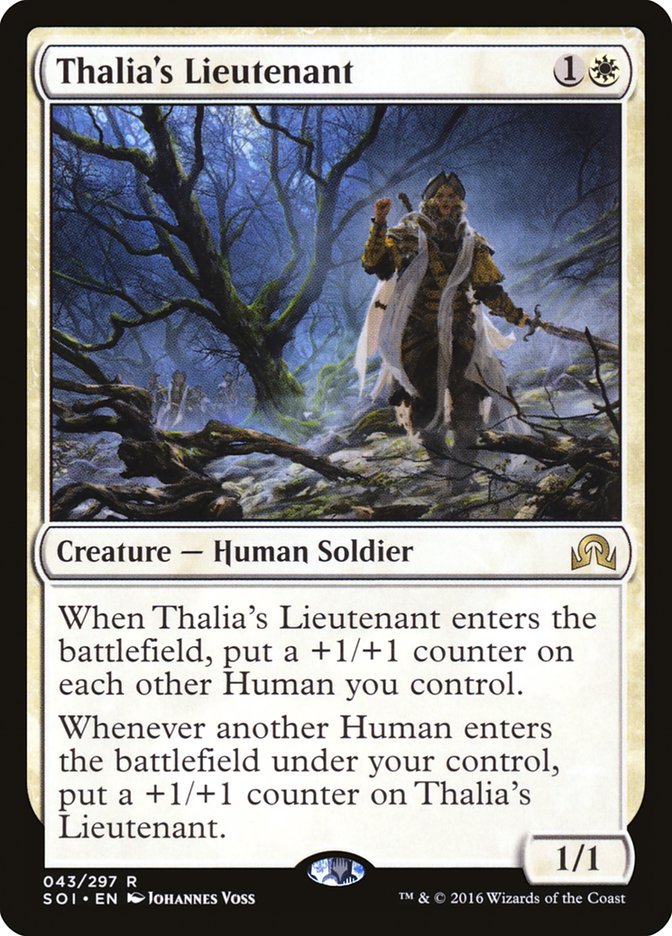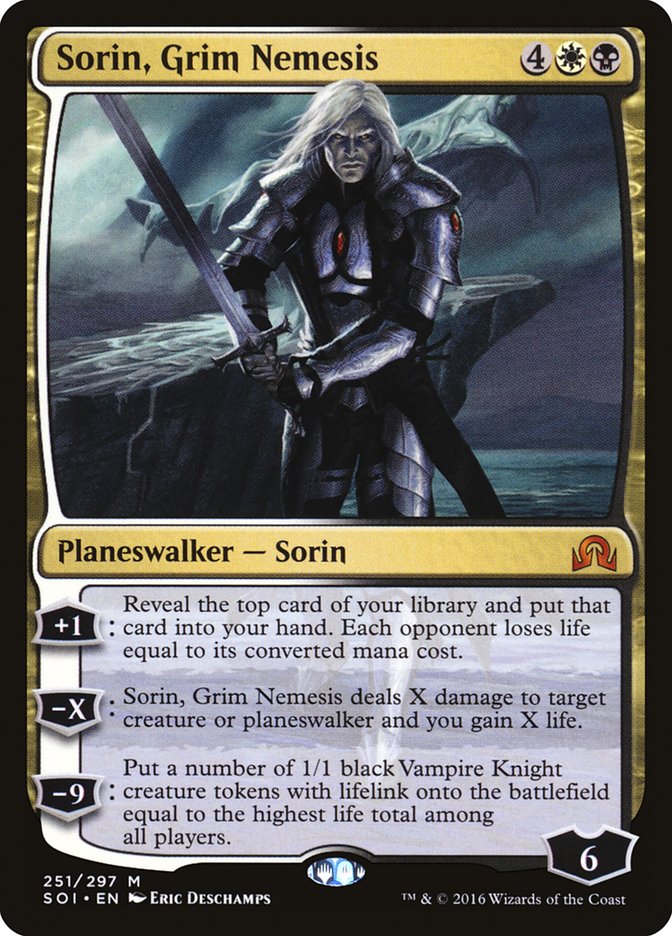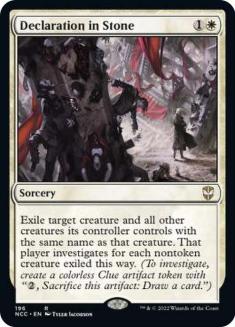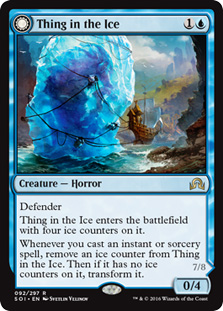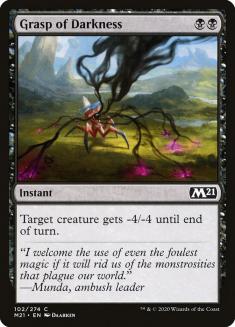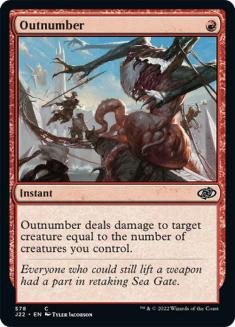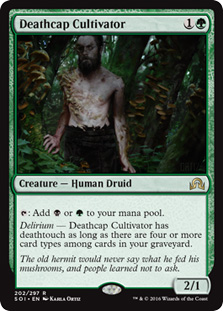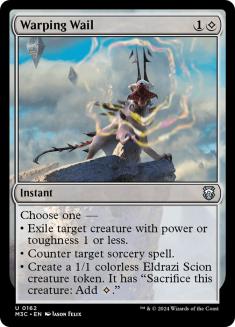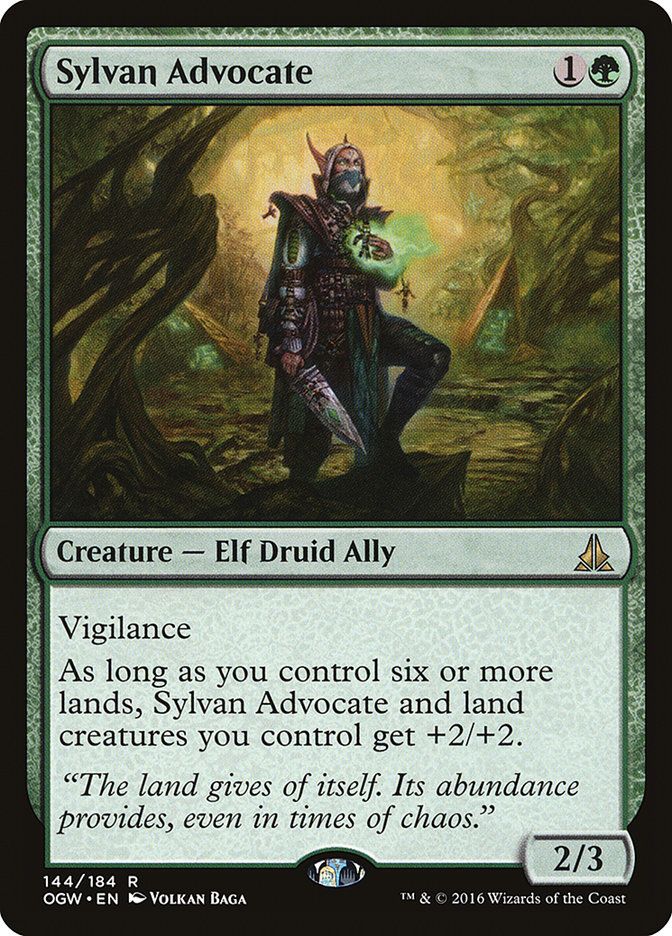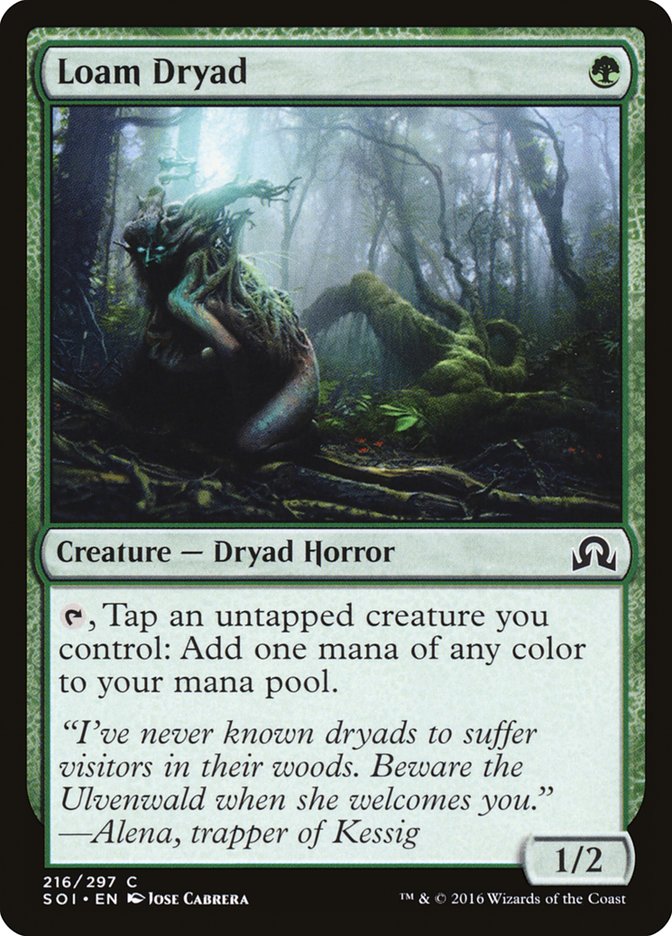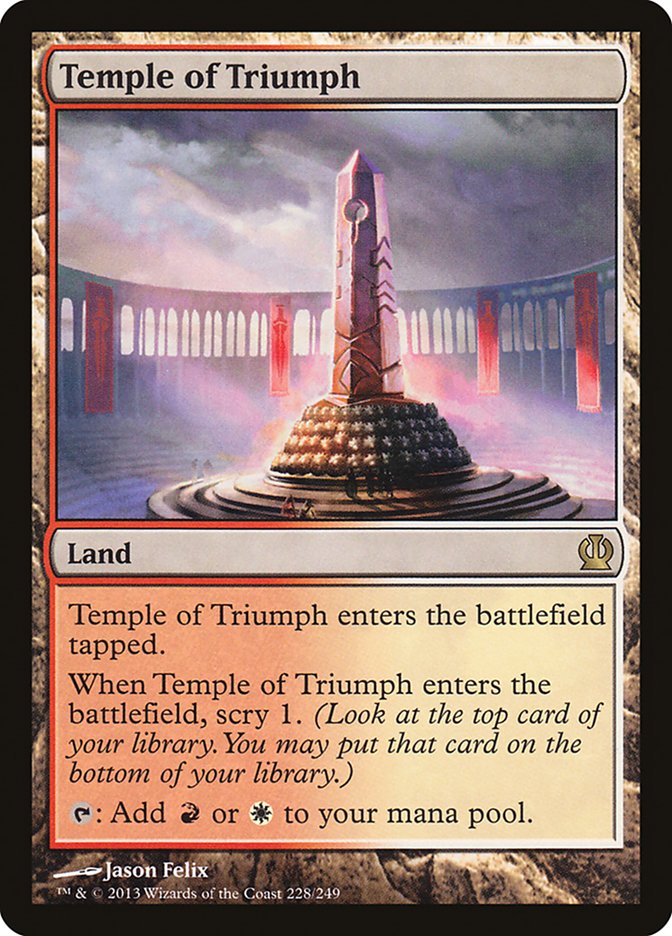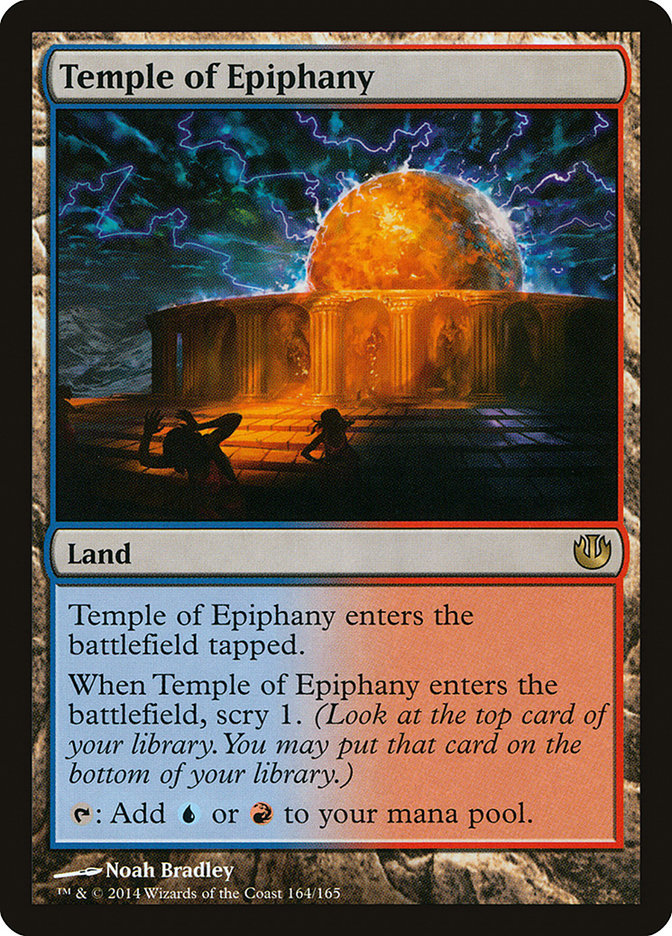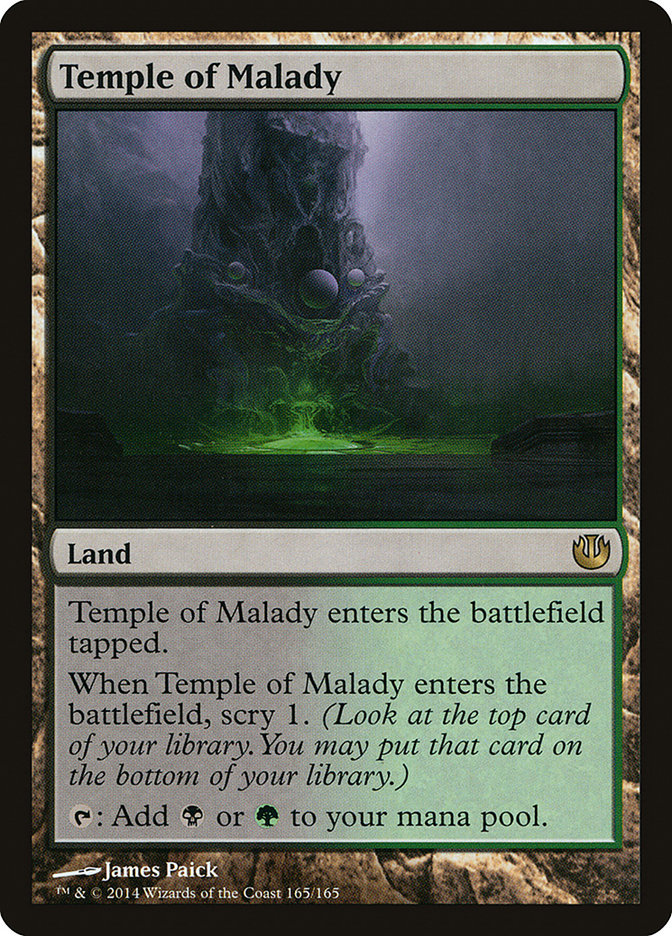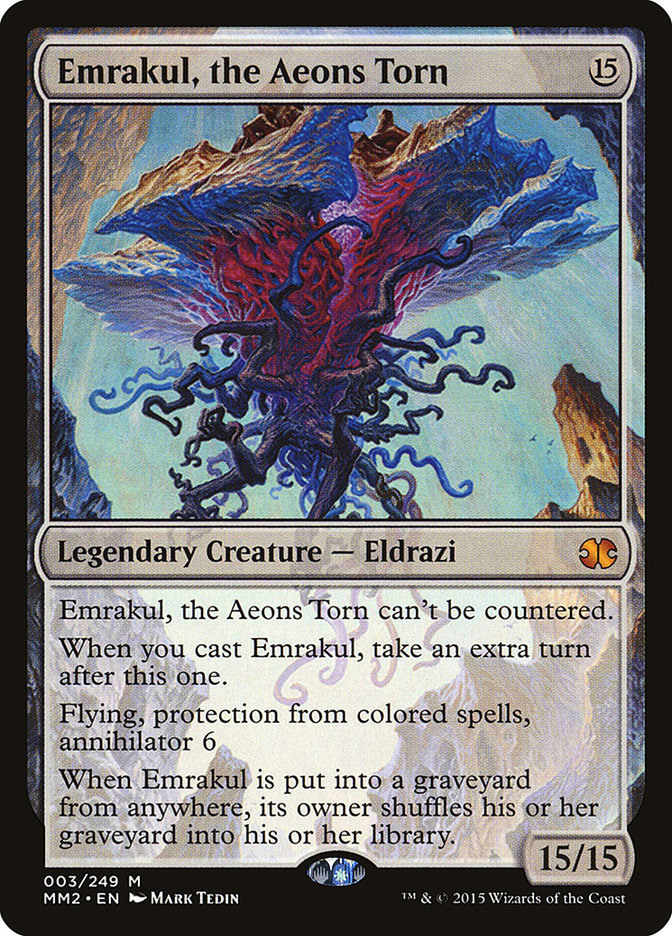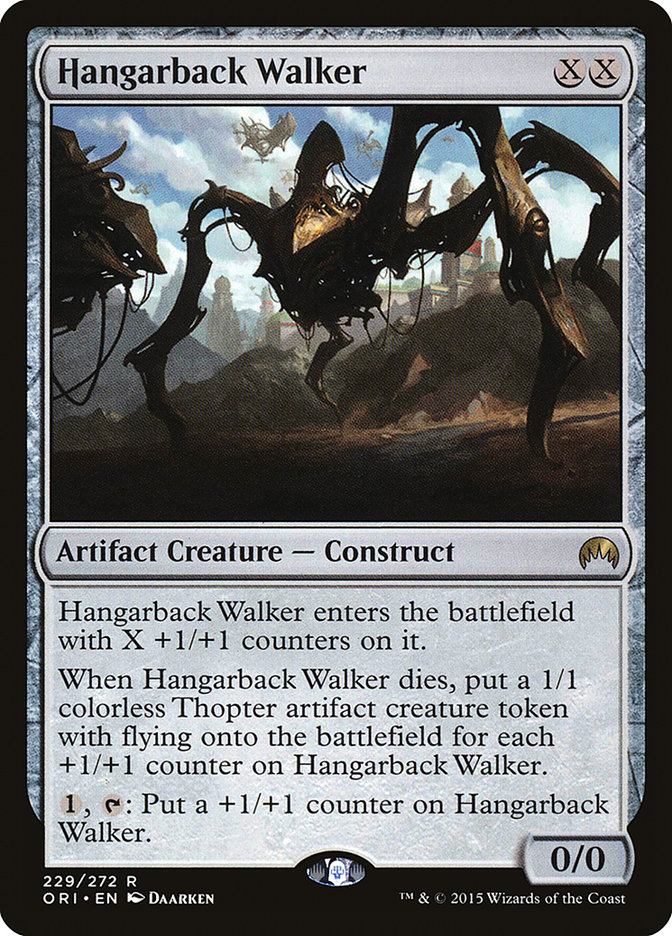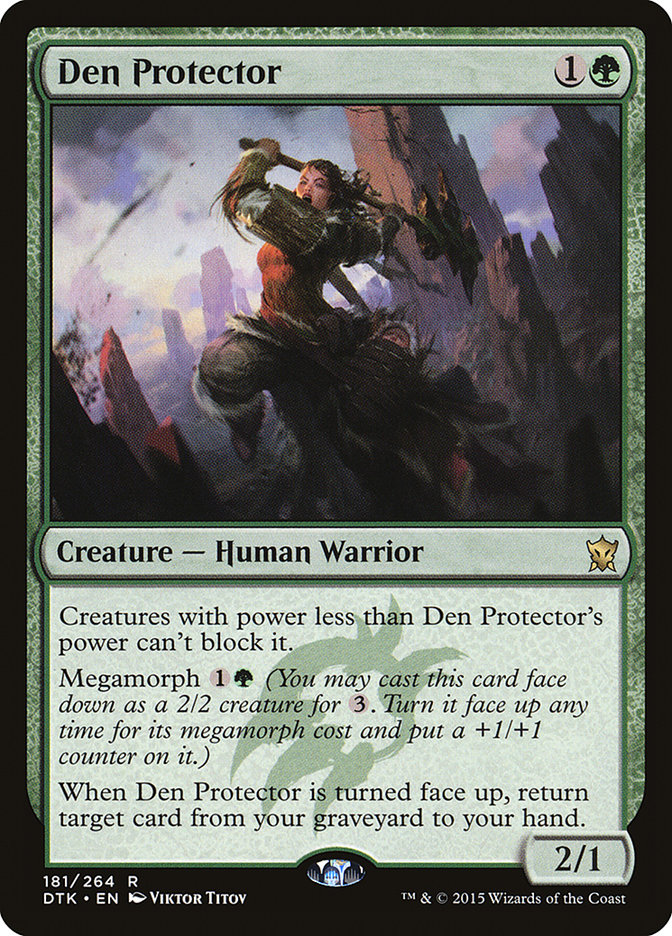I and everyone in Roanoke have been working diligently to figure out this new Standard format in preparation for #SCGBALT. We’ve started to unravel some of the mysteries of Shadows over Innistrad over the past couple of weeks. That’s why I thought a mailbag article might be the perfect way to answer the questions you might have, since they are, in fact, your questions!
@fffreakmtg Is control dead?
— Gabe Wilkie-Rogers (@ShenharShahar) April 6, 2016
Yes.
@fffreakmtg is Ultimate Price now a powerful enough card to see mainboard play as 2-4 copies?
— Inferno M16 (@InfernoM16) April 6, 2016
The short answer is yes. Ultimate Price has a place in Standard mainly for its ability to easily dispatch Archangel Avacyn.
Cheap instant-speed removal is going to be a large part of Standard for some time as we discover just how good this Serra Angel upgrade actually is. That said, I do not think this is the removal spell you want to prioritize in most decks. It doesn’t have the ability to kill creature-lands, Eldrazi, or even some of the format’s unique multi-colored threats like Olivia, Mobilized for War or The Gitrog Monster. If you deck is black, I would suggest working towards playing Grasp of Darkness as the main removal spell and supplement it with Ultimate Price.
@fffreakmtg is the frog the real deal? I’m feeling the hypnotoad
— Driscoll Mckenney (@drisc_peep) April 6, 2016
Speaking of The Gitrog Monster, is this card actually good? Initially I thought the answer was no. It was just some big dumb thing that reminding me of Meandering Towershell as this set’s “someone will probably like it” card. That’s until I actually played with this card.
A 6/6 multicolored body is exactly what this format’s removal is afraid of. Obviously there are many ways to get this amphibian off the table, but many of the removal spells that will see play will also not be able to do so. It also stands tall against Thing in the Ice and Reality Smasher.
What’s impressed me the most about The Gitrog Monster is how its ability to play additional lands helps a ton of green creatures in the format. Sylvan Advocate; Nissa, Vastwood Seer; Den Protector; and Tireless Tracker all love land drops. The Gitrog Monster is happy to oblige. The threat of this five-drop can make a Nissa, Vastwood Seer with five lands much more threatening. Situations like this will change the dynamic of many games, which is why I think this card is not only playable but might be one of the actual sleepers in the set.
@fffreakmtg Do you think we’ll see a successful week 1 control deck, and if so, what would it look like?
— Starm (@StarmHW) April 6, 2016
I’m usually the last person to be asking this question to. I personally dislike playing controlling strategies in the early weeks of a format, since it is difficult to know what you will be playing against. In fact, the reason why it’s so difficult is because everything will show up! People just want to try things. There is an argument that control decks like playing against untuned decks, but that works for everything. I usually like to play powerful cards in the first week that can allow me to capitalize on the battlefield when my opponents are either playing something I am unfamiliar with or have consistency issues with their new brews.
That doesn’t mean control is a poor choice. The perfect list of a control deck might have the highest chance of winning the tournament.
@fffreakmtg do you think you should play Westvale Abbey in every deck?
— Rowan Schaap (@r00tsS) April 6, 2016
No! Westvale Abbey is a great land that many decks are being built around right now while also being slotted into existing strategies like Red Eldrazi. That doesn’t mean it belongs in any deck. Battle and Shadow lands come at a significant cost, and cards like Westvale Abbey will exacerbate their issues.
I do think any deck that can get a reliably high number of token-based creatures should at least play one or two of this card. It’s a perfect plan against certain decks in the format and can often even protect a battlefield position from mass removal, which is a huge selling point against controlling strategies.
@fffreakmtg do you think Esper Dragons is still viable?
— Jay Gatsby (@S0YMayo) April 6, 2016
I’m well aware that I will most likely be eating my words on this one, but my honest answer is no. I think Esper Dragons was once a very powerful deck that can’t keep up in this format without fetchlands and Dig Through Time. Jace, Vryn’s Prodigy isn’t flipping like it used to, the mana is constantly entering the battlefield tapped, and the much-needed Crux of Fate is long gone. I believe those still working on the deck are just doing so because it is a deck we understood from the past, but isn’t in its prime when many other decks might be. Building new decks is difficult, but something worse than attempting something new is trying to make an old dog do new tricks. Esper Dragons is in the past and continuing to play it is most likely a mistake.
This doesn’t mean Silumgar’s Command has countered its last spell. This card is obviously very powerful and we might end up seeing a new deck casting it. Just maybe not of the Esper variety.
@fffreakmtg Hi Brad! I was asking if monored Eldrazi could be a good choice in this meta and if you suggest some other colors for it!
— Juan (@JuanIanelli) April 6, 2016
Mono-Red Eldrazi might be the best choice for anyone who hasn’t done substantial testing. Hell, it could very well be the best choice, period! The deck is extremely powerful, difficult to disrupt, and already has a proven shell to work with. I would have said that the only concern I have for the deck is that it lacks an answer to Archangel Avacyn, but the newest versions are playing Outnumber, which works perfectly in a strategy full of token generators.
I wouldn’t play another color in the deck. You have to consider that it is already technically two colors already, but the advantage to colorless being the second color is that the deck gets to play many of the format’s powerful utility lands. You should only add another color if what you have now isn’t powerful enough, and I don’t think that is the case. The deck has enough powerful things going on to win games of Magic.
@fffreakmtg Do you believe that Zombies in standard is competitive enough to be viable?
— Jason Phillips (@Juggerlag) April 6, 2016
Sadly no. Relentless One might be one of the best cards in the set in a vacuum, but the shell around the card just isn’t there yet. I will anticipate Eldritch Moon will have a few more powerful Zombie-themed cards to push the deck into the spotlight, but for now I just don’t think there are enough cards to make a competitive 60-card deck.
@fffreakmtg With the loss of fetchlands and the addition of madness cards, do you think Jace will be better or worse in this new standard?
— Jun Young Park (@Supnitle) April 6, 2016
Now isn’t this the $100 question? Initially I was in the camp of the card staying similar to power level since it’s just such a powerful card when left alone. Luckily this wasn’t the case, and I found the card to be actively bad. The opponent being able to use it along with madness is powerful, but at the same time madness cards suck without an outlet.
The times Jace, Vryn’s Prodigy lives will not make madness cards good enough to play when taking into consideration all the times it will not. This doesn’t make Jace, Vryn’s Prodigy a bad card, but it will be significantly worse than what we are accustomed to.
@fffreakmtg Folks are simply assuming that linear, fast, aggro decks will reign supreme in the first few weeks of the new meta. Agree?
— Adrian Camilleri (@OrdMandrell) April 6, 2016
I don’t agree with this. Fast, linear decks have done well in past formats, but not just because they were fast and linear. These decks had cards like Brave the Elements, Goblin Rabblemaster, Stoke the Flames, or Become Immense to alleviate issues these decks would have once opponents were able to stabilize. Currently the only tools decks have to do this are Atarka’s Command, Exquisite Firecraft, Reflector Mage, and Thalia’s Lieutenant.
These cards also have the same issue that tempo will be required for them to be good. I think that aggressive strategies will exist but will most likely be at their best when the format has forgotten about them.
@fffreakmtg do you also think that Cryptolith Rite has the potential to be broken ?
— Edwin Gaikema (@EdGaikema) April 6, 2016
Yes! Well, broken is a strong word, but I do believe the format will always have a Cryptolith Rite deck. We have barely scratched the surface with this card, and already we are proving how busted things can get. Turn 4 Ulamog, the Ceaseless Hunger is downright vomit-inducing. It’s also the best archetype so far that supports Westvale Abbey, which is also one of the best cards in Shadows over Innistrad. I don’t yet know the ceiling on this card, but I’m guessing that it’s high, and expect it to find its way into a Top 8 very shortly.
@fffreakmtg could this be a format where there’s so many viable decks that you may need to ultimately concede certain matchups?
— Jake Valentine (@hop3less) April 6, 2016
This is a very interesting question that doesn’t just apply to this format. Much like pawns in chess, sacrificing a matchup for any given tournament will almost always increase your chances of winning a tournament if done correctly. Often I figure out what I expect a metagame to be before selecting a deck. This is because I want to find the perfect weapon to defeat all of the most-played decks.
Oftentimes people will get emotionally biased in their decision to sacrifice a matchup. It’s usually because they already have a deck they like but are weak to one of the stronger choices in the metagame. Sometimes it is correct to just scrape the matchup, but it is also correct to figure out if you are playing the wrong deck. Most of the time the emotional attachment will not allow for this separation and players will justify it by simply hoping they don’t play the matchup.
I wrote an article on this subject a few years ago that can be found here if you would like to go deeper on this subject.
@fffreakmtg will all decks need a maindeck answer to westvale abbey?
— Gorras Blancas FC (@smoothmedia) April 6, 2016
Can I take a stab in the dark and say you want the answer to be yes so you can play B/G Midrange? Sadly, I believe the answer to be yes. This doesn’t mean that the answer boils down to killing Ormendahl, Profane Prince, but making sure that decks don’t get to that point. I’ve enjoyed many aspects of midrange delirium-based decks, but not being able to deal with a fast battlefield position and the eventual flipping of Westvale Abbey is a serious issue, so much so that I will not be playing a deck at #SCGBALT that I initially fell in love with.
Westvale Abbey changes the game. Midrange decks used to be able to stabilize on the battlefield by invalidating its opponent’s creatures and only using removal on must-answer threats. Now every creature is a potential threat if you don’t have an answer to Ormendahl, Profane Prince, which forces decks to evolve. Luckily there are many answers in the format to the card, but you are stuck having to play some of them.
@fffreakmtg If you had to pick a single color pair, which do you think is the most powerful in Standard currently?
— Carl Wilt (@BlastodermMan) April 6, 2016
What an interesting question! Right off the bat I would have to go with black and white.
The colors have great removal, good threats, and some of the flashiest mythics in the format. From what I can tell, the colors also work very synergistically with each other.
@fffreakmtg what are the best removal spells to be playing in each color?
— Brandon Lopez (@Chaoswithak) April 6, 2016
@fffreakmtg Should Sylvan Advocate go into green decks with 0 creature lands?
— Donald Smith, Jr. (@donaldwsjr) April 6, 2016
No! Sylvan Advocate has been a very powerful card so far, but all of those decks played creature-lands and had incentives for going longer into the game. Now there are many cards that should take the place of Sylvan Advocate in certain decks, depending on what you are trying to accomplish.
For example, I think Loam Dryad should be making the cut in any G/R Tokens strategy alongside many Outnumbers and Den Protectors. I also think Duskwatch Recruiter is a great addition to any G/W Human or Megamorph deck. Sylvan Advocate belongs in G/B Midrange decks that utilize the effects of The Gitrog Monster and have plans for longer games.
@fffreakmtg I wanted to know which of the four SOI planeswalkers you feel will see play the most in the Standard format?
— Sasha Rowley (@SashaRowley) April 6, 2016
I’ve got to go with my boy Sorin, Grim Nemesis! I’ve been liking this card more and more as testing has moved along and will most likely be playing him at #SCGBALT. Paying six mana for this card isn’t easy, and his effects on the game might not outweigh those of Elspeth, Sun’s Champion, but the card is nothing to joke about. The life gained from dealing with problematic permanents isn’t something I thought would matter all that much, but it has been surprisingly good in many battlefield positions. He doesn’t live that often, but the game is almost over when he does, which is comparable to the power level of Chandra, Flamecaller and Elspeth, Sun’s Champion.
@fffreakmtg favrit crad?
— Glenn Jones (@SecludedGlenn) April 6, 2016
Hey Glenn! I sure hope you are still liking your job as an editor for Wizards of the Coast. I always knew you were worth the money!
Tireless Tracker might not be the best card in the set, but I’ve always taken to powerful green creatures that generate some sort of card advantage. This card didn’t disappoint in my limited testing and I’m pretty sure it will find a home eventually. I just love how much velocity this card can create all by itself by not only drawing more cards but becoming more and more of a threat to the opponent’s life total. Even early in the game, it has a pseudo-“Shade” ability by being able to threaten sacrificing Clues for +1/+1 counters. It’s been fairly easy to deal three to six points of damage for almost free.
@fffreakmtg It’s early, but do you think this Standard is more or less conducive to you having a huge advantage week to week?
— Gerry Thompson (@G3RRYT) April 6, 2016
A strong question by a strong personality! Like you said, it’s early, but I would have to say more conducive than the past six months, but less when considering Theros Standard. The reason why I did so well in that format was thanks to scrylands being the most dominant lands in the format. These lands did two things that I took advantage of. These lands not only slowed the format down, they also let us scry cards to the bottom of our library.
Both of these things allowed us to see more cards in our library, which meant that deck construction was that much more important. Small edges in deck construction were amplified in the format thanks to the rate you would see a single card in the deck throughout an event, which made each card choice more important than in, say, this format or the last.
Khans/Battle Standard was the exact opposite. The manabases in the format didn’t allow for much creativity in deck construction. It was just correct to play certain cards in certain archetypes which made innovation very difficult. Four-color mana bases made it too easy to just play all the best cards crammed in one place. Finding something innovative to fight against Abzan Aggro, Four-Color Rally, and Jeskai Black was often more difficult to do than simply picking up one of them and becoming the enemy you despised so greatly.
I believe that this format will be the most restrictive on manabases we’ve seen in some time, which will be good for me. This might mean that new decks could pop up from week to week, which helps me out, but everyone not putting their lands onto the battlefield tapped and scrying all the time will add a level of variance that I got to ignore back in Theros.
@fffreakmtg Do you think people are sleeping on Sigarda? The card’s been very very good in my testing.
— John Butchko (@jbutchko) April 6, 2016
If what you say is true, then I too have been sleeping on this card. The wonderful thing about Magic is that, even though I have been playing the game for fourteen years, I still can’t evaluate Magic cards that well. I usually have to play with them to see if they are actually good or not. That said, when I look at Sigarda, Heron’s Grace, all I see is an expensive flying Angel that doesn’t have an “enters the battlefield” trigger. If left on the battlefield, sure I can see this card doing some great things, but that’s usually the case for most cards. Sigarda, Heron’s Grace has a lot of cards trying to compete for the five-drop slot, and I haven’t found a reason yet to write most of them off the list. But who knows, maybe someone just needs to wake us all up!
@fffreakmtg Where Emrakul?
— Beelang (@beelang728) April 6, 2016
Many people do not know this, but Emrakul isn’t even on Innistrad. She is Innistrad. Interdimensional beings are often times misunderstood, not only on a metaphorical level but an emotional one as well. Emrakul was not like Kozilek or Ulamog. She only wanted to be loved by the beings from this dimension, but Kozilek and Ulamog’s hunger for destruction caused us to lump all of their intentions together. Understanding that the inhabitants of Zendikar would never understand that, she went on a journey to find acceptance.
After a long journey, Emrakul found herself close to a planet that seemed to be in constant turmoil. Humans slaying Vampires, Zombies eating Humans, and Demons fighting Angels–she saw that this might be a place where she could help. Emrakul used her magical ability of interdimensional travel to fuse with the planet to better understand it. Once she realized that the planet was doomed to self-destruct, she began her process to assimilate the occupants of Innistrad the best way she knew how by turning them into Eldrazi Drones.
Eldrazi Drones are mindless by nature and only carry out the demands of an overlord. Emrakul, being high on the chain of command in her dimension, was gifted with the ability to turn once-sentient beings into mindless shells of their former selves. Emrakul first started the process by reshaping the land around Innistrad to meet the demands of what the new, “evolved” beings would need to survive once their metamorphosis was complete. This brings us to present time.
The rumors are that, once this process is complete, Emrakul will begin a movement to provide every household, cemetery, haven, and covenant with television sets and provide free smartphones to all inhabitants of Innistrad to further along the process of transforming each and every living being into a mindless Drone. Emrakul will finally feel the love she has so desperately wanted.
@fffreakmtg biggest pitfall to avoid in early standard in your opinion ?
— Mike Davis (@Mike_Davis125) April 6, 2016
This last question might very well be the most important one with #SCGBALT coming up. The biggest pitfall most players have during the first couple of weeks of a new set is they build their decks with too few dimensions. Think hyper-aggressive strategies without a plan if they fall behind or get swept, or midrange decks without answers to problematic permanents or a variation of threats like planeswalkers and creatures. Not enough card advantage engines. Not a good way to close out games against controlling strategies. Not using extra mana. Not having threats that scale like Den Protector or Hangarback Walker. Not having appropriate answers to problematic or popular threats.
It’s difficult to figure out even for me and I’ve been playing this game for fourteen years! Magic is tough, but what sets the good Week 1 decks apart from the bad ones is asking yourself the important questions and trying to fix any issues your deck might have. Now, this isn’t easy or something you can do even when thinking about it. All that you can ask from yourself is that you are trying to answer these questions to the best of your abilities and testing out potential theories before going into the event.
Now, many people asked me on Twitter how to build three-color manabases. I wanted to answer this question, but I honestly don’t know yet. I decided not to invest all of my time going into #SCGBALT trying to figure out how Battle and Shadow lands operated, but instead to work on a two-color deck that used a creature-land. We will soon learn how to do it once we start seeing some events unfold, but for right now I can’t help those of you who want to still keep playing Bant Company or Jund. Sorry!
I hope you enjoyed this Shadows over Innistrad mailbag article. I had a blast writing it and look forward to doing this again after Eldritch Moon comes out!


